Our contribution to EU27 industry
The EU27 manufacturing sector comprises 2.03 million enterprises, directly employing 27.7 million people in 2010. Within the EU27, 29,000 companies (1.4%) are operating in the chemical sector, according to 2020 data. Chemicals, encompassing pharmaceuticals, rubber, and plastics, contribute significantly, making up 12.3% (3.4 million people) of total EU27 manufacturing employment.
The EU27 chemical sector stands out as a leading industry due to its highly educated and trained workforce, complemented by sustained high investments. Over the period from 2012 to 2022, labor productivity in the EU27 chemical industry experienced a notable increase, growing at an average annual rate of 4.5% (CAGR).
In terms of investment, chemicals (including pharmaceuticals, rubber, and plastics) take the lead in EU27 manufacturing, constituting 17.7% of the total, with Automotive and Food following. The petrochemicals business accounts for more than 25% of the EU27 chemical sector’s overall investment.
Top 10 sectors account for 70% of total EU27 manufacturing enterprises
Number of enterprises in the EU27 manufacturing industry (2020): top 10
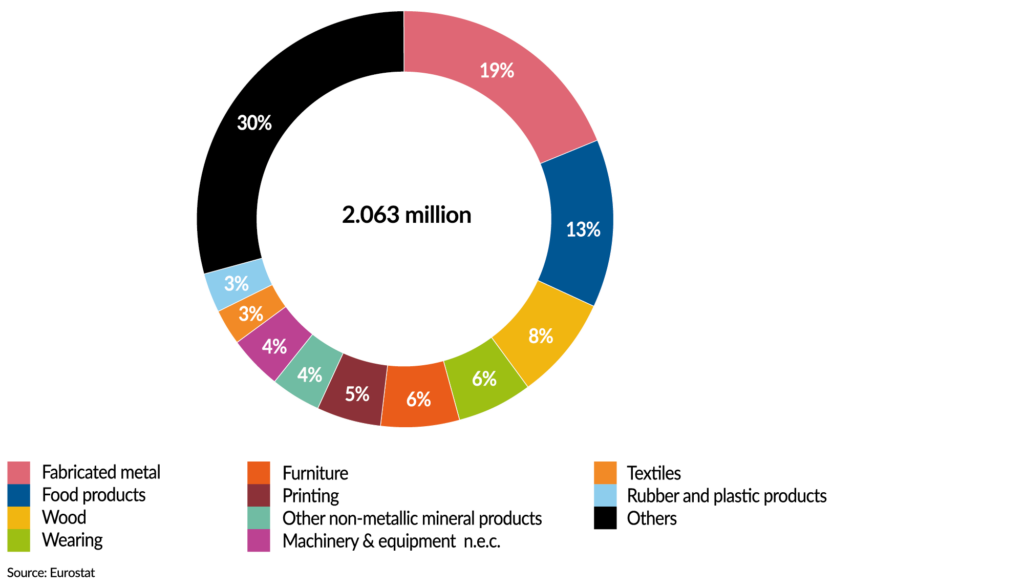
Consumer chemicals has the highest number of chemicals enterprises
Number of enterprises in the EU27 chemicals industry (2020): top 10
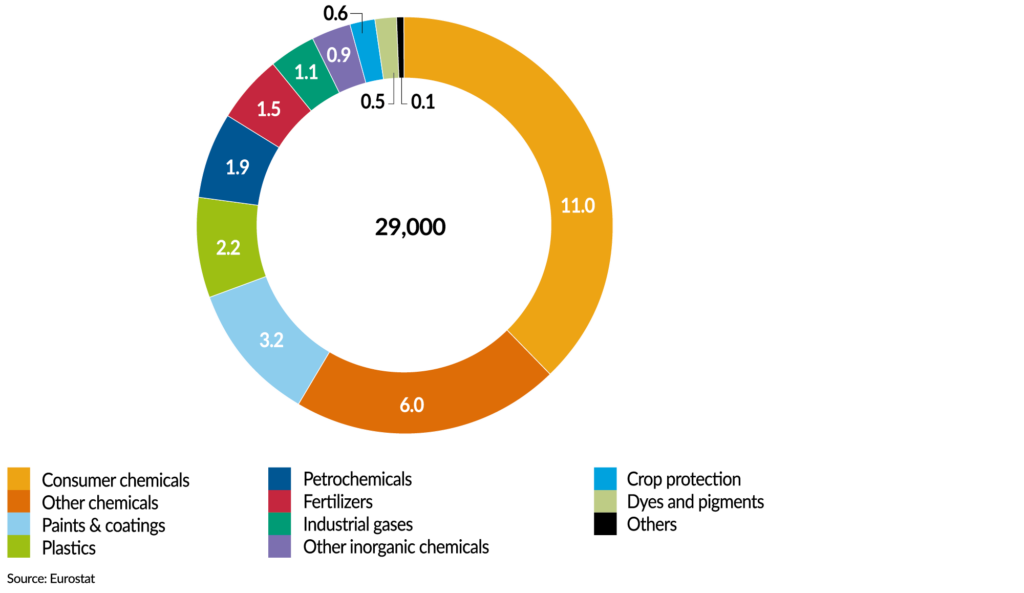
Chemicals is the fourth-largest producer in EU27 manufacturing sector
Top 10 sectors: EU27 turnover (€ billion, 2018)

Chemicals is the leading sector in terms of added value
Top 10 sectors: EU27 added value (€ billion, 2018)

Petrochemicals has the highest added value in EU27 chemicals sector
Added value in the EU27 chemicals industry (2020): top 10
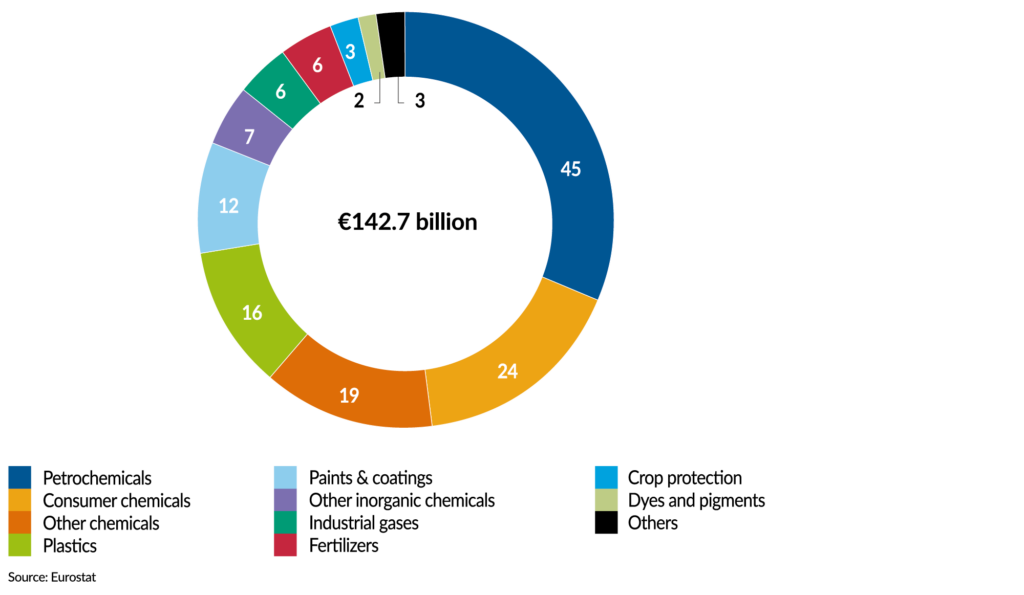
Chemicals contributes 12% of EU27 manufacturing employment
Top 10 sectors: EU27 number of employees (millions of employees 2020)
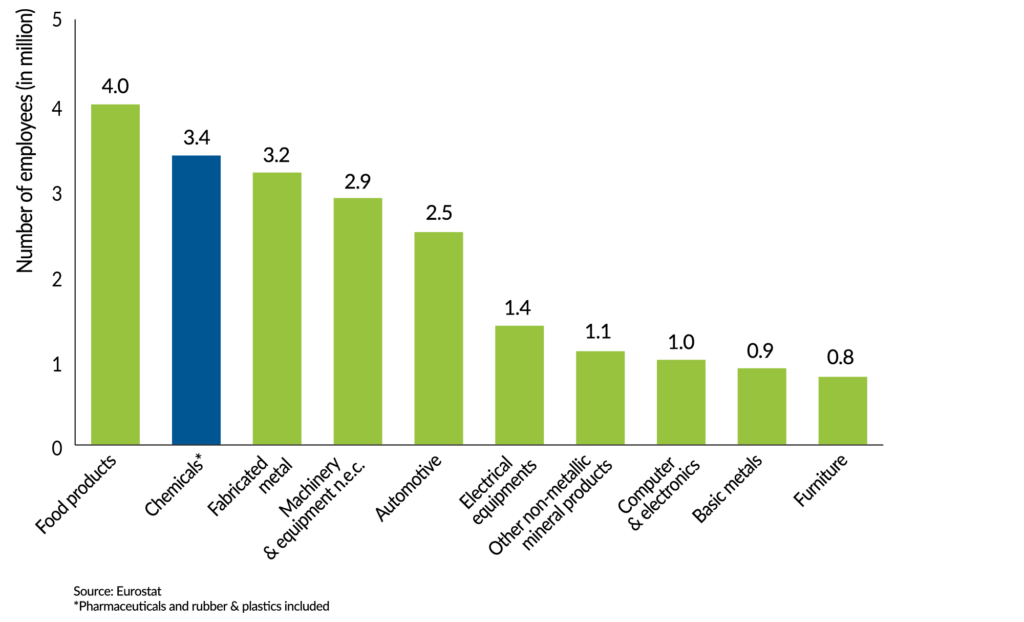
Consumer chemicals is the largest employer in the EU27 chemicals sector
Number of employees in the EU27 chemicals industry (2020): Top 10
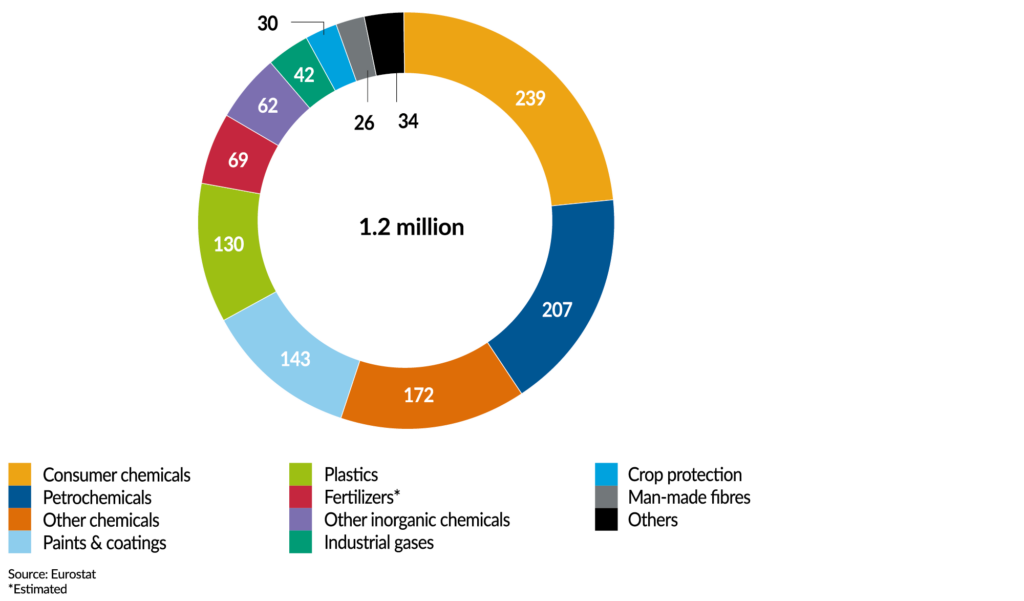
EU27 Labour productivity grows at 4.5%
Labour productivity in the EU27 chemical industry

Chemicals is the largest investor in EU27 manufacturing sector
Top 10 sectors: EU27 investment (€ billion, 2018)
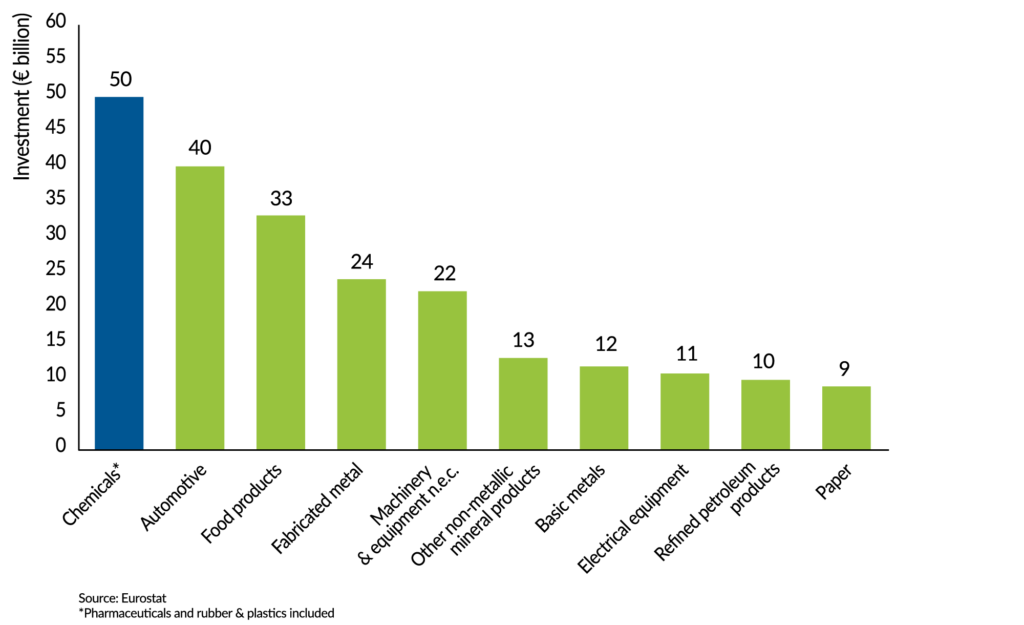
Petrochemicals is the largest investor in the EU27 chemicals sector
Capital spending in the EU27 chemicals industry (2020): top 10

Navigate the other chapters
Profile – Trade Development – Growth And Competitiveness – Energy Consumption – Capital & R&I Spending – Environmental Performance